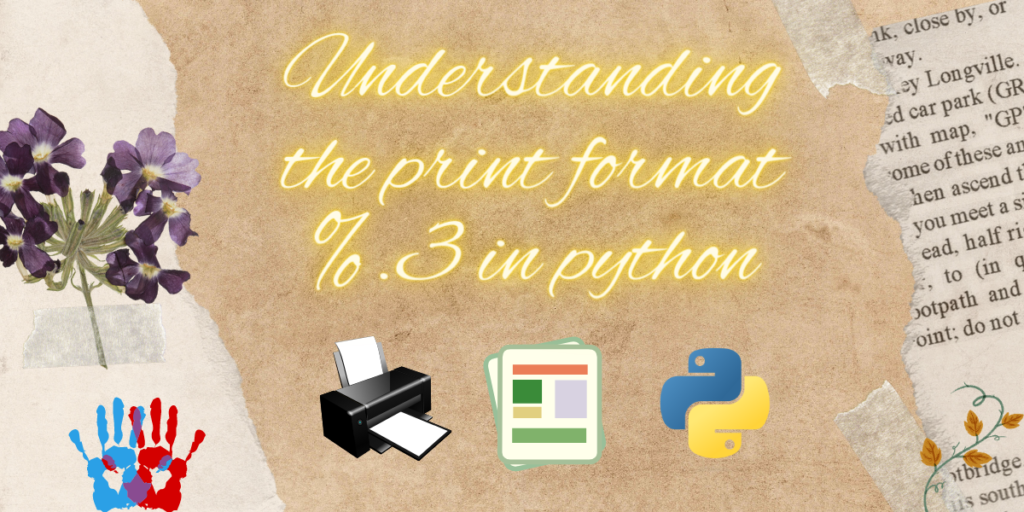We programmers all need clean, crisp, and bug-free code with perfect and precise output. But, at the end of the day, we are all humans and make mistakes. That is why we need to add comments to our code so that we don’t forget what our code does after a while and use debuggers to reduce errors. Although these can be a little tedious when the code is huge, the one thing that we can always do is keep our outputs concise with formatting.
Formatting output with python has never been this easy! Optimizing your output will always be a priority if you are a beginner or an avid programmer. In python, there is more than one method for formatting data. The one that we will discuss in this article is the “%” method which helps create a more presentable output for the code you write.
Advantages of Output Formatting in Python
In Python, the “%.3f” format specifier is a method for formatting floating-point numbers to display only three decimal places. This is achieved using the ‘%’ operator along with the ‘%.nf’ format specifier, where ‘n’ determines the number of decimal places. For example, given OUR_NUM = 3.14732, using the “%.3f” format specifier by printing “print(‘%.3f’ % OUR_NUM)” will output “3.147”. This approach provides a concise and precise output for floating-point numbers in Python.
Not only strings, but we can also format and transform huge numerical outputs and limit them to two or three decimal points. In addition to print(), the “%f” function can be used to compact outputs.
The “%f” function in python is very similar to the printf() function in C. This is understandable as python has its roots embedded in C, the mother of all programming languages.
Some of the advantages of formatting are:
- With formatting, small blocks of code are easier to understand.
- It is useful to format longer strings or huge numerical data which is unnecessary.
- The output is easier to produce and easier to read.
- Easier comparisons can be made without separating the variables from the strings explicitly.
- They are format specifiers hence we don’t have to worry about the different data types when clubbed together.
Syntax of the ‘%f’ Format Specifier in Python
In this method, the ‘%f’ format specifier is used along with the precision value denoted by ‘%.nf’, where n is the number of decimal places we want to display. This allows us to display a floating-point number rounded up to n decimal places.
Therefore, precision can be ensured in a float-type integer in the following manner:
OUR_NUM= 3.14732
print("%.3f" %OUR_NUM)
The output would be: 3.147
Therefore, the “%.3f” in python formats a float data type in such a way that only the 3 numbers after the decimal point is included in the output and the other numbers after that are ignored. Instead of 3, you can specify any number after the “.” sign in order to get that many integers after the decimal point in your output.
Other Format Specifiers Using the ‘%’ Operator in Python
Other data types in python can also be formatted using the “%” operator.
The “%d” operator is used to print integer values as well just like in C. For example if we have,
OUR_NUM= 389
print('%d' % OUR_NUM)
The output is: 389
The “%o” operator in python is used to print octal values. For example:
OUR_NUM= 455
print("%o" % (OUR_NUM))
The output will be: 707
The “%E” operator is used for displaying and formatting exponential values. Such as,
OUR_NUM= 14465.9877665
print("%10.1E" % (OUR_NUM))
The output will be: 1.4E+04

Alternative Methods for Float Formatting in Python
After the python updates, we have more than just one method of formatting, let’s explore some of them.
- The format() method: One of the most popular and widely used formatting options in python, it is widely used to format strings, floats, etc. We can format floats using format() in the following way:
OUR_NUM= 2345.9876
print("{:4.3f}".format(OUR_NUM))
The output will be:2345.988 - The round() method: The round method also allows us to round a number up to our desired decimal place in the following manner:
OUR_NUM= 2345.9876
print(round(OUR_NUM,2))
The output will be:2345.99
Suggested: Check if Python Package is installed.
Conclusion.
In this article, we have explored the usage of the ‘%’ operator and the “%.3f” format specifier in formatting output in Python. Presenting clean and accessible output is crucial for both developers and end-users to understand and interpret the results effectively. By using output formatting, you can enhance your code’s readability and ensure that your program delivers the desired output in a clear and concise manner. Moreover, understanding different format specifiers and methods allows you to format various data types effectively. Remember, a great coder’s work can be easily understood, much like an artist’s masterpiece.
